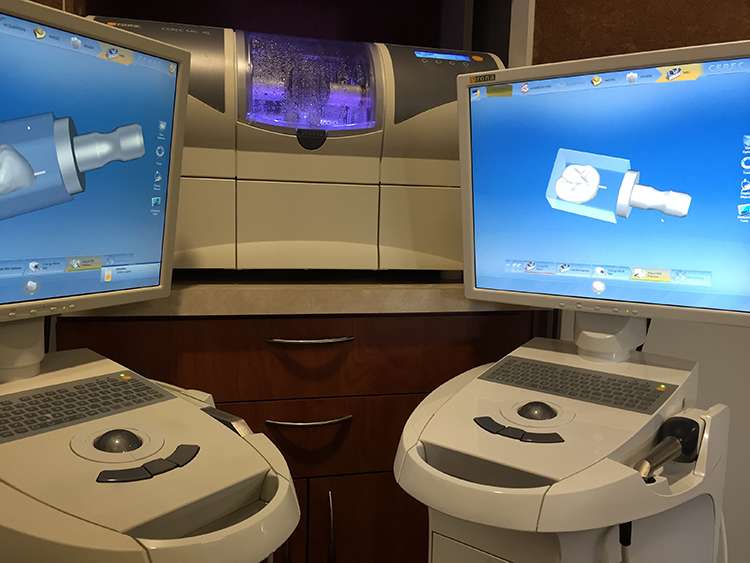
Restorative Dentistry
Restorative dentistry refers to treatments and procedures intended to restore health and function to the teeth and mouth. These services address teeth that are broken, decayed, damaged, or missing. We use the latest restorative treatments and technologies to help restore health, function, and esthetics to your mouth. Our restorative solutions include non-metal fillings, veneers, inlays, onlays, crowns, bridges, implants, root canal treatment, and dentures.
Dental implants
Dental implants replace missing teeth. They consist of an artificial tooth root that is surgically placed into the jawbone, and a dental restoration (such as a crown) that is attached from above to the artificial root. The result is a fully functioning and natural looking prosthetic tooth that blends in beautifully with the rest of your smile.

Tooth extractions
A tooth may need to be extracted for many different reasons including severe decay, periodontal (gum) disease, impaction/malposition, or the tooth may be broken in such a way that makes it unable to be restored by the dentist. The removal of a single tooth can lead to issues chewing, problems with your jaw joint, and shifting teeth. To avoid these problems, the dentist will go over possible options to restore the affected area with dental implants, bridges or removable appliances.
The extraction process: The doctor will get your tooth and surrounding tissues numb before starting the procedure. During the process you will feel a lot of pressure, but should not feel pain at any time.
After the procedure: A blood clot will form within the socket that facilitates healing of the extraction site. Applying pressure to the area by biting on a gauze pad for 30 minutes immediately after the appointment will help stop the bleeding and begin the healing process.
It is important not to disrupt or dislodge the blood clot once it is formed. Do not rinse vigorously or try to clean the site, suck on straws, smoke, drink alcohol or brush teeth next to the extraction site for 72 hours. Limit vigorous exercise for the next 24 hours, as this increases blood pressure/flow and may cause more bleeding from the extraction site.
After the tooth is extracted you may feel some pain and experience some swelling. An ice pack to the area will keep swelling to a minimum. Take pain medications as prescribed. The swelling usually subsides after 48 hours. If antibiotics are prescribed, continue to take them for the indicated length of time even if signs and symptoms of infection are gone. You can eat normally as soon as you are comfortable. It is important to resume a normal dental hygiene routine after 24 hours.
Cerec
First, your doctor will evaluate the tooth in question and determine the proper treatment. If the tooth is determined to need a crown, then it may be able to be restored using the CEREC technology. CEREC allows your dentist to provide you with a new all-ceramic (tooth-colored) crown in one visit!
What is different about CEREC, as compared with the traditional crown method, is that it involves digital impressions (no more “goo” impressions) and no temporary crowns! First the dentist will prepare the tooth for the crown by removing decay, old restorations, or weakened tooth structure. Then your dentist will scan the prepared tooth using the digital camera, which then creates a 3-D virtual model of your mouth on the computer acquisition unit. The dentist then designs the crown on the computer program while you enjoy some down time and watch the process! This information is then sent to a separate milling unit within the office.

A ceramic block matching your correct tooth shade is then placed inside the milling unit, and in about 10-20 minutes the machine will produce your custom crown. The new crown is tried in the mouth to ensure it fits properly. Once the fit is verified, the dentist will take time to stain and glaze the restoration. After this process, the crown is ready to be polished and bonded in place. All of this is completed in one visit!





